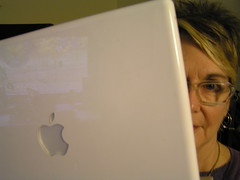
f0d7_1_b.JPG (JPEG Image, 400x300 pixels) via kwout
Readers read by glancing at various headlines and choosing articles, and often reading only a bit before moving on to another, or back to a previously started one. In some ways, the layout of these midcentury newspapers predated the glancing way people currently read web pages, as seen in this reading map of webpages:

F-Shaped Pattern For Reading Web Content (Jakob Nielsen's Alertbox) via kwout
spapers appeared to be more influenced by the layout of magazines than by the web.

250px-Liberal_Landslide,_Globe_and_Mail_cover.jpg (JPEG Image, 250x405 pixels) via kwout
However over the past year I've seen changes that I attribute directly to the influence of the web. While many people I know would think that I was making a negative and critical statement about the changes in newspapers, I am not. I see these changes as intelligent awareness of the impact of the web on how we read. I also see them as making newpapers both more attractive too, and more likely to be read by, the digital generation, a real positive.
The first change I noticed had to do with the numbering of the newspaper sections in the Toronto Star. All my adult newspaper-reading life, the sections had been numbered by using the letters of the alphabet. I knew where to find the comics because I could find the section labelled 'F' right after the section labelled 'E' and before 'G'. I was used to that. Alphabetical indexing was a well-established structure (which developed as a result of the invention of printing, but that another story.) Then some time ago, something called "tagging" was invented for the web, because linking is part of how the web works. This resulted in people expecting a "label" that was also a "keyword".
When the Toronto Star switched from alphabetical labelling to a kind of tagging of its sections, I didn't notice at first. The logic of labelling the Sports section 'S', and the Life section 'L' made immediate sense to me, and I'm sure to almost everybody. The first section remained 'A' and the, usually second, World section became the variation 'AA', but the Business section was 'B' even though it was rarely, if ever, second. Perhaps not verybody sees this change as influenced by the web, but I do.
I challenge anyone to deny the influence of the web in the way today's front page is laid out.

TheStar.com - Today's Paper via kwout
Pictures catch the eye first, and the text is there to support the information in the pictures, just as on well-designed web pages. Then it's almost as though headings were hyperlinks, that you could click on (read below) for more information. The information is conveyed initially by the graphics, and the text is augmented further by graphics.
Our culture is becoming more visual in the representation of information, and was even before the net. The increasing use of photos as part of newspapers and magazines grew steadily during the 20th Century, and was indirectly augmented by movie and tv. We like visually conveyed information and attractive graphic design, and the smart communicators know that. And, the side of the newspaper and web connection I haven't mentioned, the fact that I collected all my images from the web and are publishing them on the web, even though what I'm observing is newspapers!
Also posted at http://eduspaces.net/vinall/weblog

